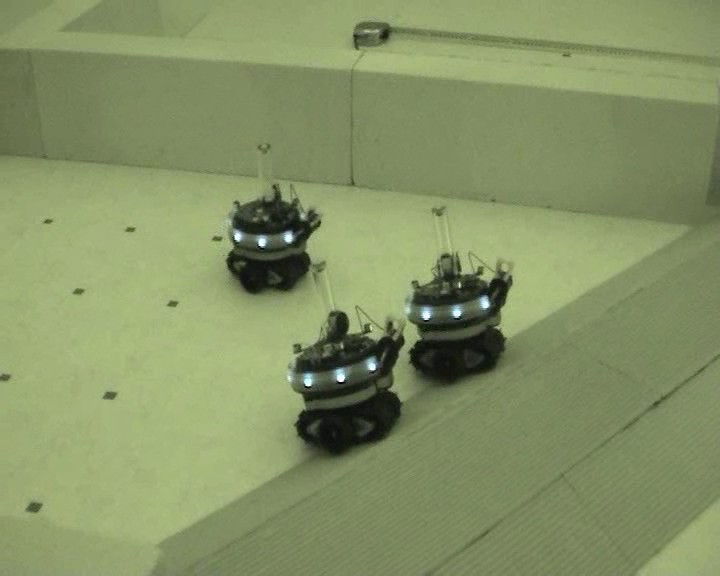
|
|
3 real robots use the basic self-assembly response strategy to overcome the difficult hill
(wmv).
This is footage from one of the experimental trials described in our paper.
|
|
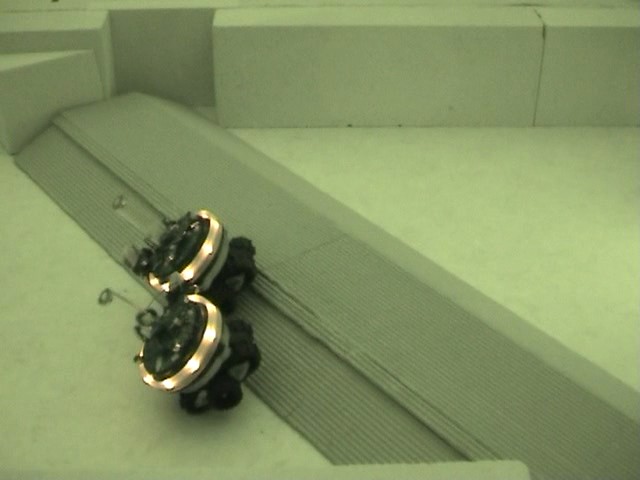
|
|
2 real robots fail to collectively overcome a hill due to an inappropriate hill approach orientation
(wmv).
The robots self-assemble in response to the difficult hill, then approach the hill with the random orientation
that resulted from the stochastic self-assembly process. This random orientation proves
overly parallel to the orientation of the hill, the center of gravity escapes the footprint
of the connected robotic entity, and the robots topple over.
This is footage from one of the experimental trials described in our paper.
|
|
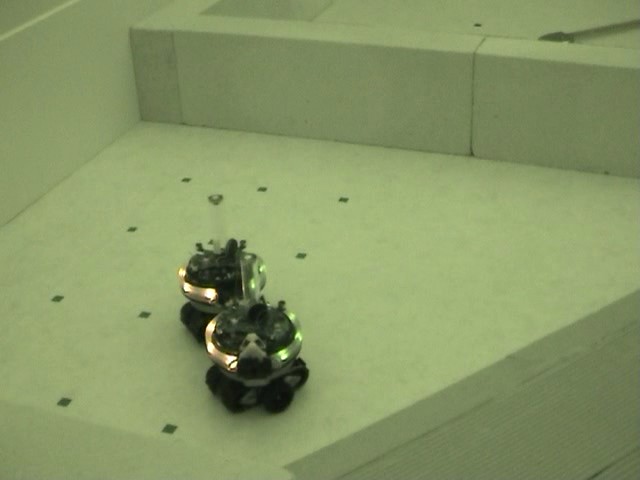
|
|
2 robots use the connected coordination strategy to overcome the difficult hill. The robots
self-assemble in reponse to the difficult hill, then rotate as a collective entity to arrive
at an appropriate group orientation
(wmv).
The connected robots rotate to prevent toppling, choosing an orientation perpendicular to
that of the hill. This is footage from one of the experimental trials described in our paper.
|
|
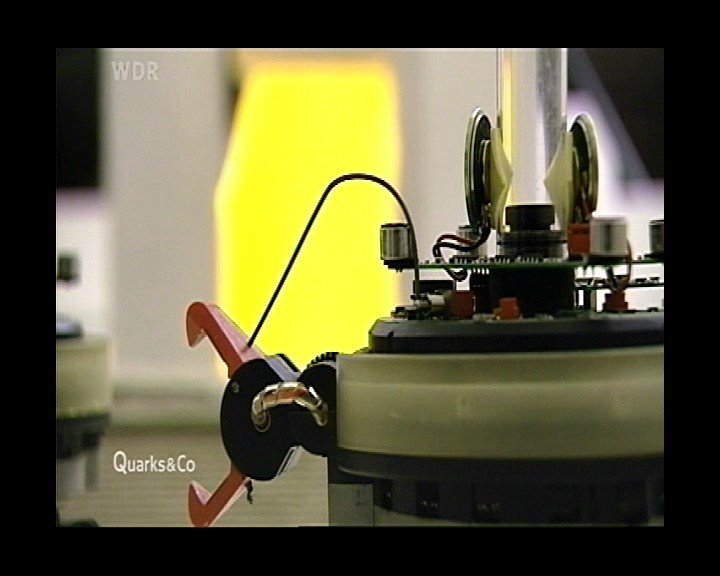
|
|
Basic self-assembly response strategy as seen on German national television
(h264 /
wmv).
Extracted from programme "Quarks and Co." shown on german television channel WDR.
|
|
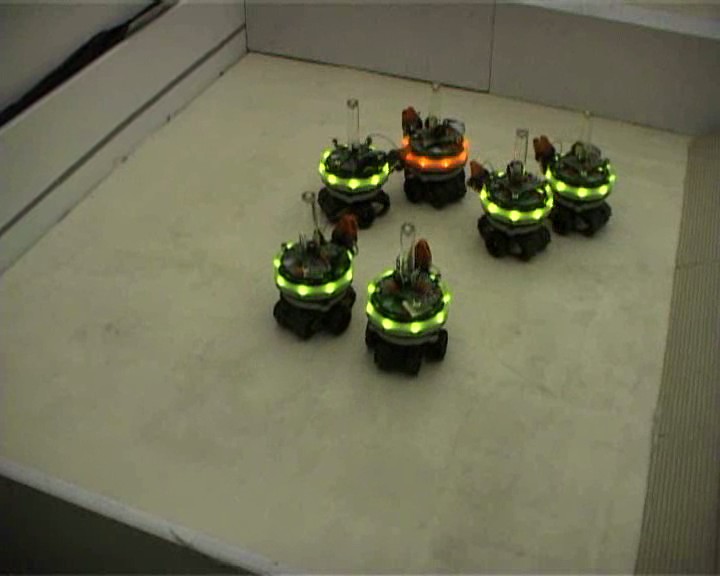
|
|
6 real robots use the basic self-assembly response strategy to overcome the difficult hill
(wmv).
|
|
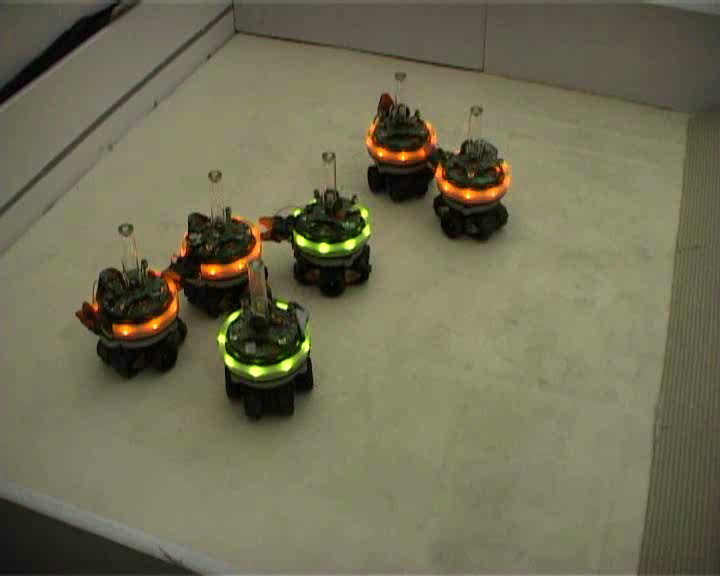
|
|
6 real robots use the basic self-assembly response strategy to overcome the difficult hill
(wmv).
Two robots independently seed separate self-assembly processes.
The seeds do not detect each other because the distance between them is too great.
The result is a simple form of stochastic, distributed group size regulation.
|
|
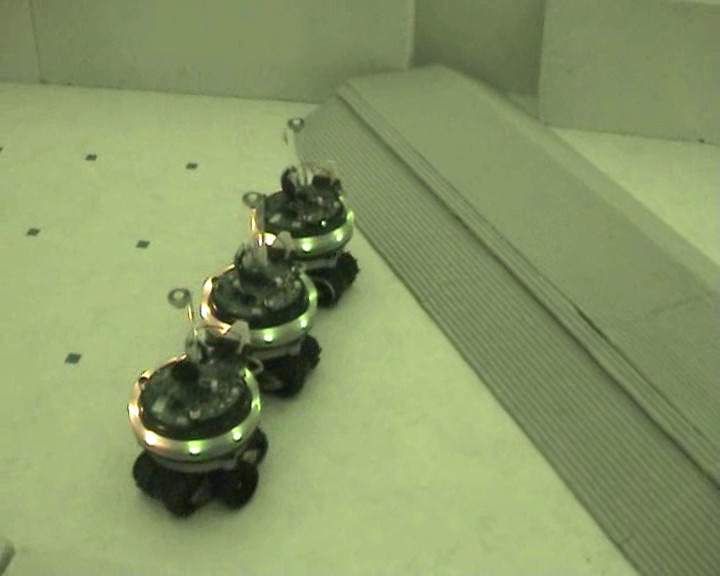
|
|
3 pre-assembled robots use the connected coordination strategy to overcome the difficult hill
(wmv).
The robots in this video were manually assembled by the experimenter. This video shows
how instructions propogate along the line of robots in this implementation of the connected coordination strategy.
|
|
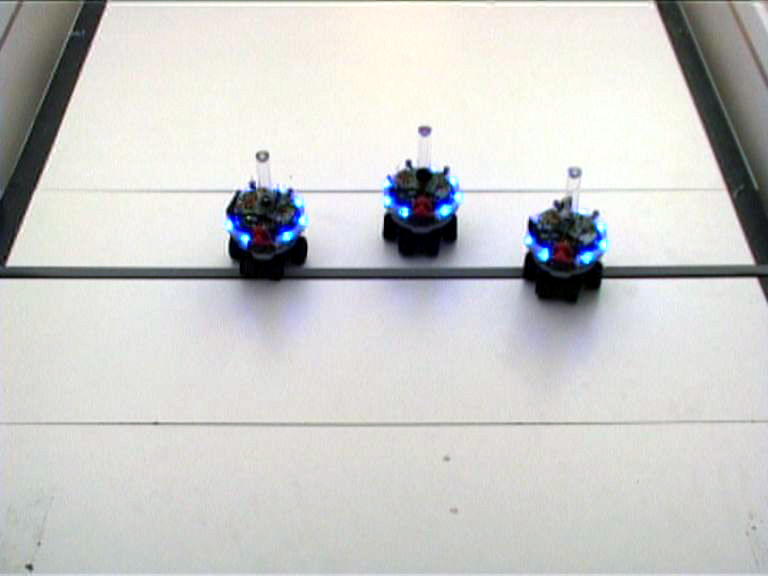
|
|
3 robots use the basic self-assembly response strategy to overcome a 3cm hole
(wmv).
The robots detect that the hole is narrow, and cross individually.
|
|
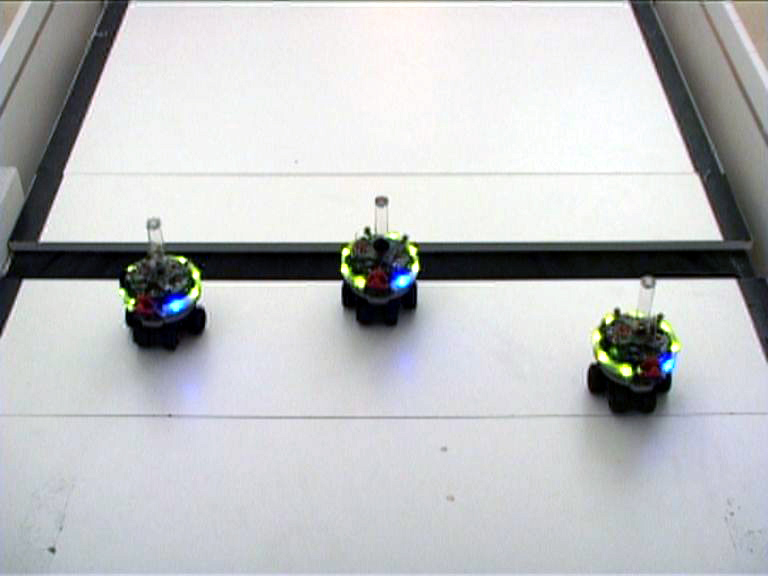
|
|
3 robots use the basic self-assembly response strategy to overcome a 10cm hole
(wmv).
The robots detect that the hole is too wide to be crossed individually, so they self-assembly and
cross as a connected entity.
|
|
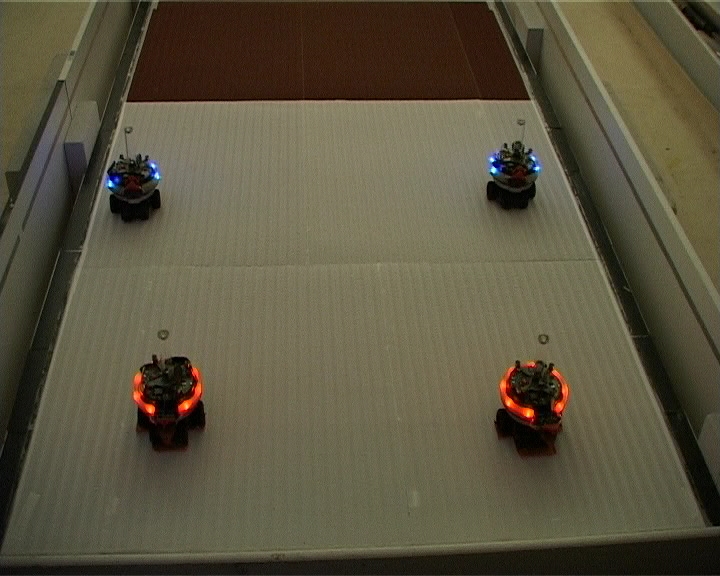
|
|
2 rescue robots use the connected coordination strategy to rescue two broken robots in parallel.
(wmv).
The first rescue robot to attach recognises that it can transport by itself the broken robot to which
it has attached, and repels the second rescue robot, thus ensuring that the second rescue robot attaches
to the other broken robot and thus that the tasks get carried out in parallel.
|
|
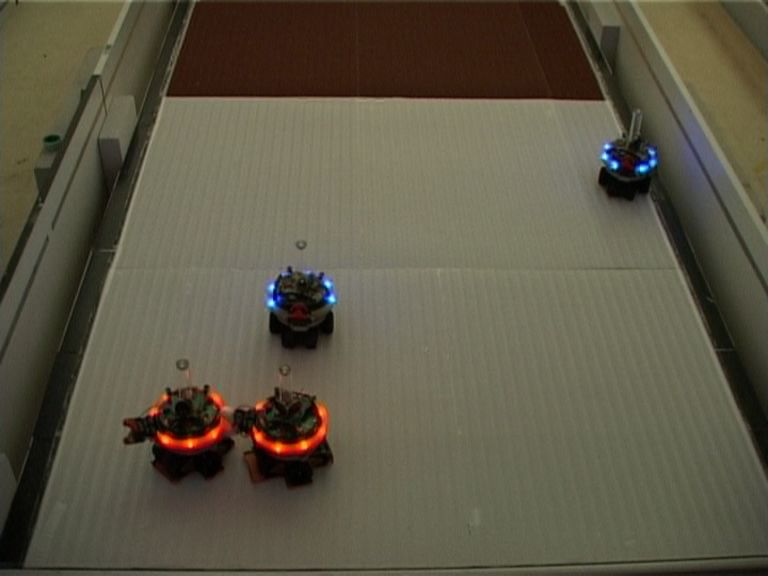
|
|
2 rescue robots use the connected coordination strategy to rescue a larger composite broken
swarm-bot
(wmv).
The first rescue robot to attach recognises that it is unable to transport the broken
swarm-bot, and calls for assistance. The second rescue robot attaches, and together
they succeed in transporting the broken swarm-bot.
|
|
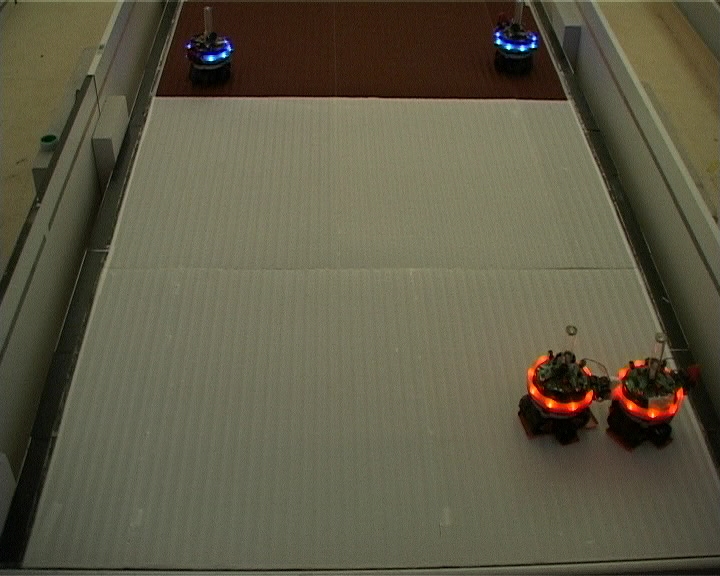
|
|
2 rescue robots use the connected coordination strategy to rescue a larger composite broken
swarm-bot
(wmv).
The first rescue robot to attach recognises that it is unable to transport the broken
swarm-bot, and calls for assistance. The second rescue robot attaches. The initial connected
morphology is not successful in transporting the broken swarm-bot. The rescue robots stochasticallly
reconfigure until they find a successful morphology.
Then together they succeed in transporting the broken swarm-bot.
|











